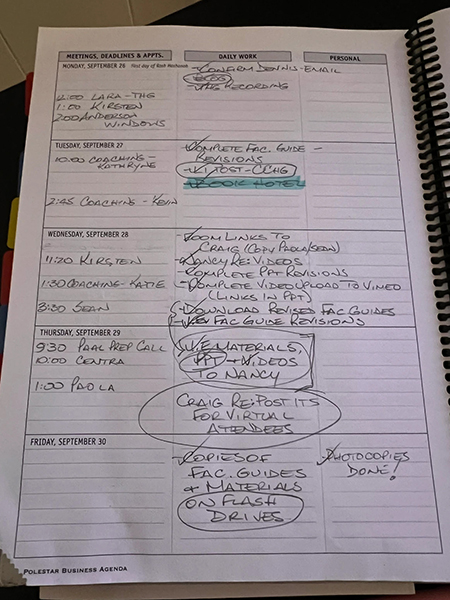
Mark Twain once said “If it’s your job to eat a frog, it’s best to do it first thing in the morning. And if it’s your job to eat two frogs, it’s best to eat the biggest one first.”

Eat the Frog is now a catch phrase for the task management technique which advises people to do their most important tasks first. The idea is that, if people wish to be successful in their lives, then they have to take immediate and necessary action to get the tough stuff done—ideally first thing in their day.
While this may be about productivity, it sure does tie in with Time Management. When we have lots of “frogs” on our task list, it’s easy for us to procrastinate and delay those tasks. We fill our time with stuff that needs to be done, sure, but maybe isn’t what we should be paying the most attention to. If we want to manage our time well, we also have to manage our tasks well.
In addition to increasing your productivity, employing effective time management techniques also offers other benefits like reducing your stress, meeting deadlines, and controlling your workflow.
Okay! What should you start doing to better manage your time? Here are some ideas:
- Plan out your day. Make a list of what you’d like to accomplish during the day. To-Do lists are certainly oldies, but they’re still goodies. You also have the added benefit of the sense of accomplishment when you get to cross things off your list. I use a good, old paper planner. I remember tasks so much better when I write them down, and I use visual methods to demonstrate importance.

- Prioritize your tasks. You can use whatever system you like. Me, I like to circle or highlight the things that are most important. Other people I know rank their tasks in order of importance and urgency. Some systems tell you to rank them high, medium, or low importance. A good example of this method is the Eisenhower Matrix. Using this matrix, you divide your tasks into four categories—Urgent and Important (frogs), Important But Not Urgent (tadpoles?), Urgent But Not Important (ah – these are probably the tadpoles), and Not Urgent or Important (frog free).
- If the projects are really big, divide them into smaller tasks. It’s tough to face the thought of eating that huge frog. But maybe, if you divided the task up into chunks, it would be a lot more manageable and less intimidating. Just think—as you chip away at each chunk, you get to check off all those tasks on your to-do list!
- Know where your time bogies are. Maybe you get sucked into email, or perhaps you linger too long in meetings. Every time you do this, you’re tanking your productivity. If you know what distracts or detracts you from being productive, take steps to eliminate those distractions. Maybe you need to close your email? Turn off your phone? (Fun fact, surveys tell us people check their phones 160 times per day!)
- Forget about multitasking. It doesn’t work. Every time you switch tasks, you actually waste time. The mental energy used in switching tasks creates a lag that can be avoided by doing one thing at a time. So, instead of switching again and again, finish up one task and then go to work on the next.
- Can you delegate? So often, as leaders, we think we have to do everything ourselves. We feel badly about “burdening” others. Consider this, though… what if we’re actually not the best people to do the task? There could be others on our team that are better able to do the task and do it well.
If you want to get good at time management, you’re going to have to devise a strategy to keep you organized. There are all kinds of good tools available: time trackers, productivity apps, project management tools, and good old paper planners like I use. Investigate the different systems and see what feels right for you. And then—and this is the most important part—use the system!
Aah… that feeling of being in control of your day, of knowing you’ve done what needed to be done and you now have time to breathe. What will you do with all that extra time? Why not use it in making connections with the people on your team? One-on-one conversations are so important for engaging and retaining employees. The sad thing is, most managers say they don’t have enough time to hold these important meetings. Use the techniques above to find and use that time. It’s so worth it!